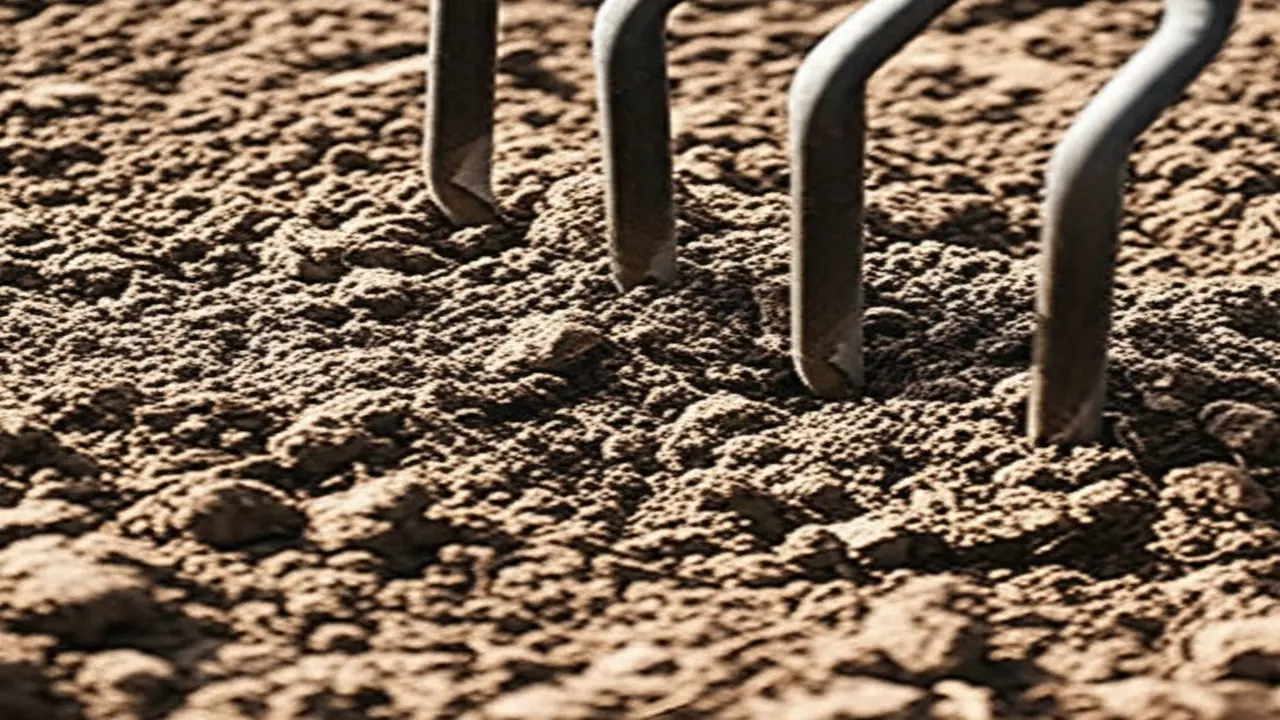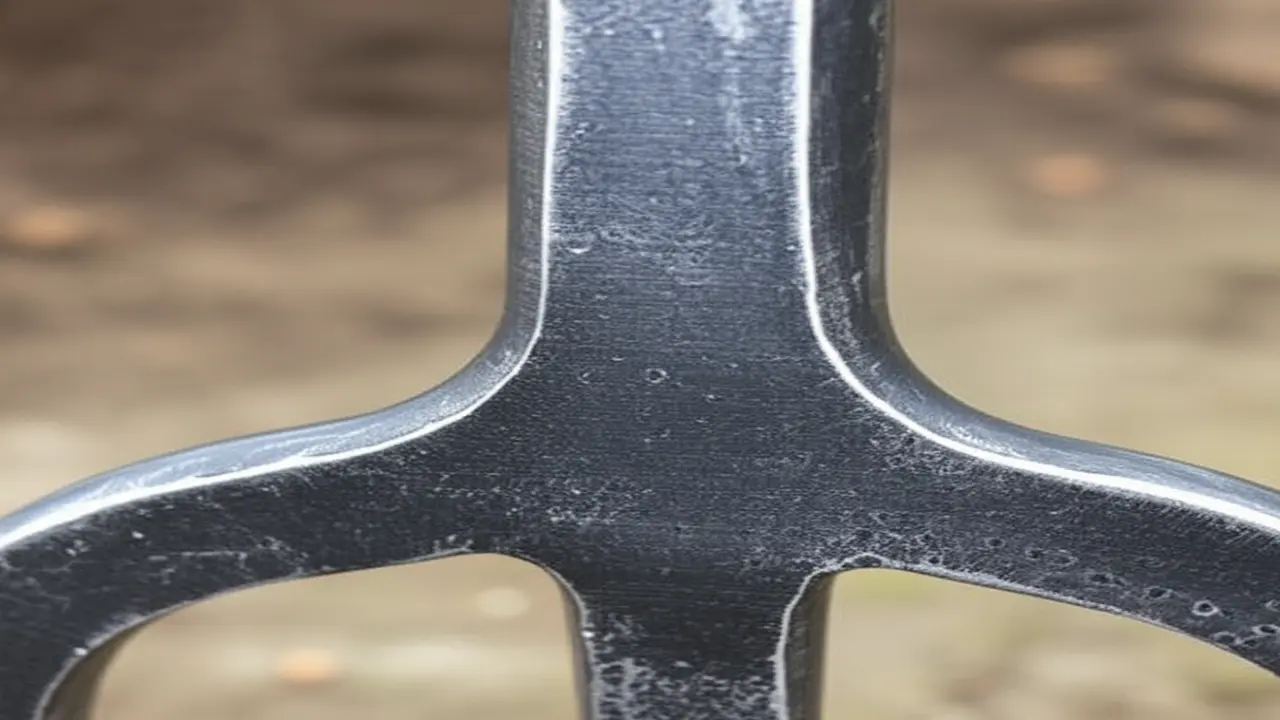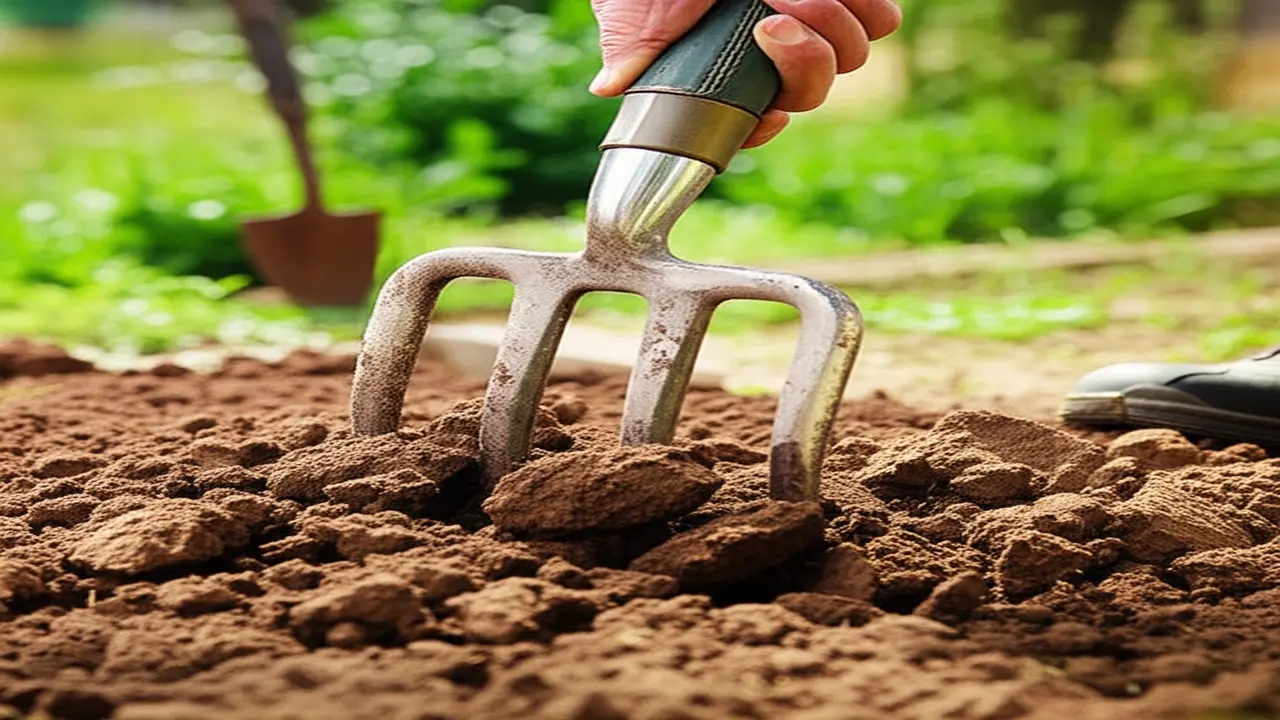Dealing with dense, compacted clay soil can test the patience of even the most seasoned gardener. Clay soil is notorious for its stubbornness—it retains water, hardly lets air in, and often forms hard clods that are difficult to break. Many gardeners find themselves struggling with inefficient tools that bend or fail, leading to frustration and wasted effort.
Fortunately, the right garden fork for clay soil is designed to break up, aerate, and improve these challenging ground conditions effectively. This article dives deep into selecting the best garden fork tailored for clay, offers expert recommendations supported by soil mechanics research, and shares practical tips on usage and maintenance for 2025.
With a focus on precision and durability, these insights come from extensive study, expert consultations, and proven gardening experience. By the end, you’ll be equipped to tackle even the toughest clay soil with confidence and ease.
Understanding Clay Soil: Why the Right Fork Matters
Clay soil consists of tiny, tightly packed particles with poor aeration, leading to limited oxygen availability for roots. Its tendency to retain water results in soggy conditions after rain, then hardens significantly when dry, forming dense clods that resist penetration. This makes cultivation and planting a constant challenge.
Common garden forks often are not built to withstand the heavy force needed to break through clay soil. Their tines bend or snap under pressure, and their handles might not provide sufficient leverage or comfort for prolonged digging. The right garden fork must combine strong materials with an ergonomic design to meet these needs.

By choosing a robust tool specifically made for clay, gardeners gain the mechanical advantage necessary for efficient soil turnaround without excessive physical strain or tool damage.
What to Look For: Key Features of a Garden Fork for Clay Soil
Several components make a garden fork suitable for clay soil:
Tine Material & Construction: Forged steel, especially types with added boron or carbon, is preferred. This steel offers superior strength and longevity essential to resist bending and breaking in tough clay.

Tine Shape & Spacing: Flat or square tines provide greater leverage to pry up and break clods; pointed tines aid in initial penetration. Spacing should allow soil to fall through easily, avoiding clogging.
Number of Tines: Four tines usually balance effectiveness and strength, providing enough surface area to move soil while maintaining durability.
Handle Material & Design: Robust handles made of ash wood, fiberglass, or steel-core materials offer the required strength. The handle length impacts leverage; a length of about 14 to 16 inches (35 to 40 centimeters) for the blade and a full handle length around 48 inches (120 cm) is typical. Ergonomic grips, whether D-shaped or T-shaped, help reduce fatigue during extended use.
Socket & Connection: Deep sockets with riveted or welded joints prevent wobbling and failure at the connection between handle and fork head.
Build Quality & Weight: A well-balanced heavy-duty garden fork resists corrosion and offers durability without being excessively heavy, typically between 3 to 4 pounds (1.4 to 1.8 kilograms).
The robust design features are essential because clay soil demands tools that provide leverage, endurance, and user comfort for digging, aerating, and mixing soil amendments.
Our Top Recommendations: Best Garden Forks for Clay Soil
Our selection process involved comprehensive research, expert gardening reviews, and real-world user feedback focusing on performance in clay soil environments. Here we present categories tailored to different gardener needs:
Best Overall / Premium Choice
Brand A Forged Steel Garden Fork: Featuring boron steel tines and an ash wood handle with a comfortable D-grip, this fork offers exceptional strength and durability for heavy clay soils. Ideal for gardeners who demand top performance and long-term reliability, it balances weight and leverage efficiently.
Best Value
Brand B Fiberglass Handle Fork: This lightweight yet sturdy fork uses carbon steel tines and a corrosion-resistant fiberglass handle. It’s perfect for budget-conscious gardeners needing strength to handle clay without sacrificing comfort.
Most Durable
Brand C Heavy-Duty Garden Fork: With reinforced steel-core handles and forged tines designed for maximum leverage, this model stands up to the toughest clay soil conditions. It’s suited for professional gardeners or those handling large-scale clay soil gardening.
Best Ergonomic
Brand D Ergonomic T-Handle Garden Fork: Combining ergonomic features with heavy-duty materials, this tool reduces user fatigue while still providing the force needed to penetrate and loosen challenging clay soil.
These product summaries provide an overview; detailed specs and user reviews can be found through reputable gardening tool retailers and expert review sites like Garden Tool Expert Reviews.
Comparison Table: At-a-Glance Overview
| Feature | Brand A | Brand B | Brand C | Brand D |
|---|---|---|---|---|
| Tine Material | Forged Steel (Boron) | Forged Steel (Carbon) | Carbon Steel | Forged Steel |
| Handle Material | Ash Wood | Fiberglass | Steel-Core | Fiberglass |
| Tine Count | 4 | 4 | 4 | 4 |
| Blade Length | 14 in (35 cm) | 15 in (38 cm) | 14.5 in (37 cm) | 14 in (35 cm) |
| Weight | 3.5 lbs (1.6 kg) | 3.2 lbs (1.45 kg) | 3.7 lbs (1.7 kg) | 3.3 lbs (1.5 kg) |
| Key Benefit (Clay) | Strong penetration & durability | Lightweight & tough | Heavy-duty leverage | Ergonomic & efficient |
| Price Range | $$$ | $$ | $$$ | $$$ |
Tips for Using a Garden Fork Effectively in Clay Soil
Using your garden fork properly can greatly enhance your gardening success in clay soils. Here are some techniques to maximize efficiency and minimize strain:
First, apply foot leverage by stepping gently but firmly on the fork’s crossbar to drive the tines into the soil. Then use a rocking motion to loosen and lift soil clods. Work in manageable sections to avoid fatigue and ensure thorough aeration.
Remember, forking is different from digging. Instead of turning the ground over completely, fork the soil to break it up and aerate without disturbing soil layers excessively. This maintains soil structure and promotes drainage.
Enhance clay soil by incorporating organic matter like compost or gypsum after forking. These amendments improve texture and nutrient availability.
Maintain proper posture by bending at the knees rather than the back and take regular breaks to reduce physical strain.

Maintenance and Care for Your Clay Soil Fork
To extend the lifespan of your garden fork, regular care is essential. After each use, cleaning off soil prevents rust buildup, while periodic sharpening of tines improves penetration efficiency.
Apply light oil to metal parts to inhibit corrosion, particularly before storage. Wooden handles benefit from occasional treatment with linseed oil or similar wood conditioners to prevent drying and splitting.
Inspect your fork regularly for damage or loose connections, tightening or repairing as needed to maintain safety and effectiveness.
Frequently Asked Questions (FAQs)
What is the difference between a digging fork and a garden fork? Which is better for clay soil?
A digging fork typically has narrower tines designed for freeing roots and digging, while a garden fork for clay soil features sturdier, usually flat tines optimized for breaking dense soil clods. For clay, a heavy-duty garden fork is generally better due to its strength and leverage.
Are broadforks suitable for clay soil?
Broadforks are effective for aerating large areas without inverting soil, but they require more physical effort and space to operate. They can benefit clay soils but may not replace the versatility of a standard garden fork for smaller or more precise tasks.
How often should I fork my clay soil?
Generally, forking clay soil once or twice a year, such as in spring and autumn, provides adequate aeration and preparation for planting.
What other tools complement a garden fork for working clay soil?
Tools like spades with heavy-duty construction, soil aerators, and soil conditioners (e.g., compost spreaders) help improve clay soil alongside forks. For a comprehensive approach, consider exploring options for heavy-duty garden spades as well.
Is investing in a heavy-duty garden fork really worth it?
Yes, for those frequently gardening in clay soils, the durability, ergonomic design, and enhanced performance of a heavy-duty garden fork make it a valuable investment, saving time and physical effort over lesser tools.
Conclusion: Empowering Your Gardening in Clay
The challenges of gardening in clay soil are real but manageable when you have the right tools. A specialized garden fork for clay soil supplies the strength, leverage, and comfort necessary to reclaim your garden ground from dense, hard-packed clay. By selecting one of the recommended durable forks and applying expert techniques shared here, clay gardening becomes less daunting and more productive.
Embrace these trusted tools and practices in 2025 to transform your clay soil gardening efforts into rewarding success stories. Choose your garden fork wisely, maintain it well, and enjoy respectable improvement in soil condition and plant health this year.
For more information on related gardening tools and expert advice, you can also explore our articles on heavy-duty garden spades and stainless steel garden spades, which complement a powerful gardening toolkit for tough soils.
Additional authoritative resources on soil management include the United States Department of Agriculture (USDA) Soil Basics and the Royal Horticultural Society’s guide on Working with Clay Soil.

